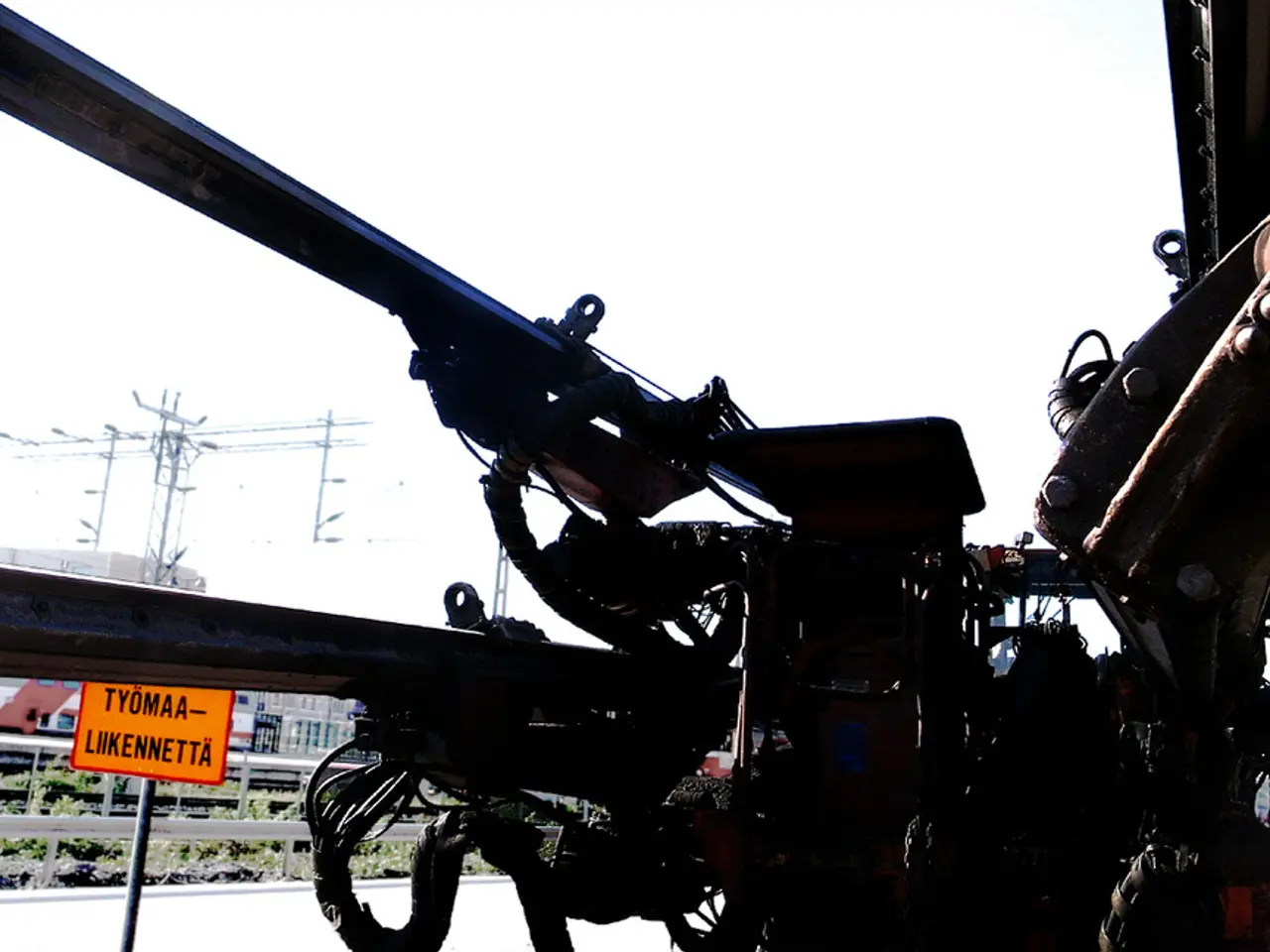Thermal Drones' Applications Across Major Industries (Forecast for 2025)
Thermal Drones Transform Industries in 2025
Thermal drone technology is making a significant impact across various sectors, revolutionizing how organizations maintain and monitor their assets. In 2025, these drones are particularly prominent in renewable energy, utilities, and agriculture, driven by operational efficiency, safety, regulatory requirements, and advances in AI and automation.
Renewable Energy and Utilities
In the renewable energy sector, thermal drones are widely used for commissioning inspections to ensure compliance and ongoing operations and maintenance (O&M). They help detect issues like hot spots, damaged panels, or shading in solar arrays and wind turbines, improving the overall efficiency of these energy sources [1][2]. The energy and utilities sector leads drone adoption overall, due to the need for efficient infrastructure monitoring and maintenance across large and complex installations [4].
Agriculture
Agriculture is also adopting thermal drone technology, though it is less focused on thermal imaging alone. Drones equipped with multispectral and thermal cameras are used for crop health monitoring, irrigation management, and pest detection, helping to improve yield and reduce labor [4].
Adoption Acceleration
Adoption is accelerating due to several factors. Speed, safety, and accuracy are key benefits, as thermal drones provide rapid, precise inspections that reduce human risk, operational downtime, and maintenance costs in sensitive or hazardous environments [1][2]. Regulatory compliance and performance monitoring are also critical, with thermal drone data being essential for proving regulatory compliance at commissioning and for proactive issue detection during O&M [1].
Rising renewable infrastructure investment, driven by global net-zero goals, is another factor fueling the demand for drone-assisted inspections [2]. Integration with automation and AI is enhancing the actionable intelligence extracted from thermal data, making drones more effective and scalable [2]. Broader drone market growth in sectors such as logistics, military, and precision agriculture is also reinforcing the relevance of thermal drone technology in multiple domains [3][4].
Impact Across Industries
Thermal drones are providing real-time thermal imagery without interrupting workflows and are valuable in sectors with aging infrastructure, remote assets, or hazardous conditions. In manufacturing and industrial maintenance, thermal drones are becoming standard tools for detecting overheating motors, conveyor systems, bearings, and electrical panels [1][2].
In the oil and gas sector, thermal drones offer a fast, safe, and accurate way to inspect pipelines, storage tanks, flare stacks, and refineries [1]. They are also a critical tool for solar farm operators, helping to maintain uptime, reduce repair costs, and support warranty claims, compliance checks, and performance optimization [1].
Thermal drones are reshaping modern agriculture by giving farmers a powerful way to monitor plant health, irrigation efficiency, and soil conditions [1]. They reduce the need for ladders, scaffolding, or confined space entry, improving worker safety [1].
Operational Cost Savings
Operational cost savings are achievable with thermal drone technology, as it reduces labor hours, minimizes equipment damage, and avoids system failures [1][2]. Integrating thermal inspections into routine workflows helps manufacturers optimize maintenance schedules, reduce emergency repairs, and keep production running smoothly [1].
As automation and smart monitoring expand across industries, thermal drones are becoming a core part of the asset management toolkit [1]. In 2025, thermal drone technology is a frontline asset across multiple industries [1]. Faster inspections are possible with thermal drones, as they can scan large areas in a fraction of the time it takes to inspect them manually [1].
Regulatory compliance is facilitated by thermal inspections, offering traceable, timestamped data to support reports and audits [1]. Predictive maintenance is central to minimizing downtime and preserving equipment lifespan, with thermal drones providing a fast, non-intrusive way to scan critical systems [1].
In summary, thermal drone technology is most prominent in renewable energy and utilities for compliance and maintenance, with agriculture also growing, driven by operational efficiency, safety, regulatory requirements, and advances in AI and automation [1][2][4].
- The field of finance is turning to thermal drones, exploring how they can boost operational efficiency and ensue safety, especially in asset management and regulatory compliance.
- Wealth-management firms and personal-finance experts are discussing the potential of thermal drones for monitoring investments in renewable energy and utilities.
- In the home-and-garden industry, there's growing interest in implementing thermal drones for remote monitoring of power consumption, identifying inefficiencies, and optimizing energy usage.
- Sports clubs and event organizers have started considering the use of thermal drones for crowd monitoring, ensuring safety and swift response to emergencies.
- The travel industry is investigating the applications of thermal drones in identifying potential issues with infrastructure, such as thermal leaks in buildings or overheating equipment at airports.
- In the shopping sector, thermal drones are being proposed for monitoring store operations and maintenance, cutting down on energy waste and streamlining operations.
- Technology companies are looking into developing artificial intelligence solutions that can analyze drone-generated thermal data for businesses to optimize data-and-cloud-computing resources, focusing on energy usage and resource distribution.




